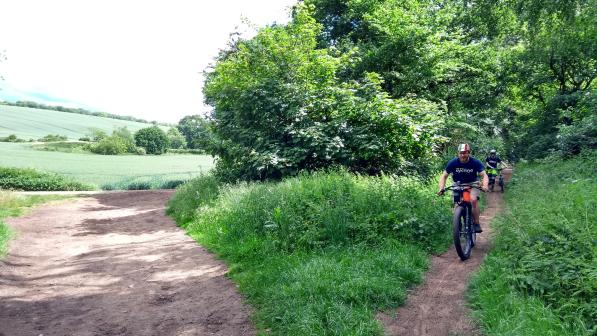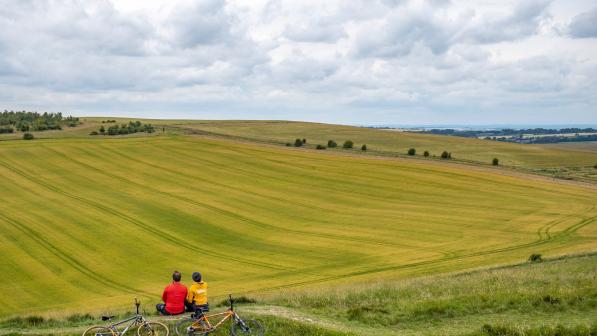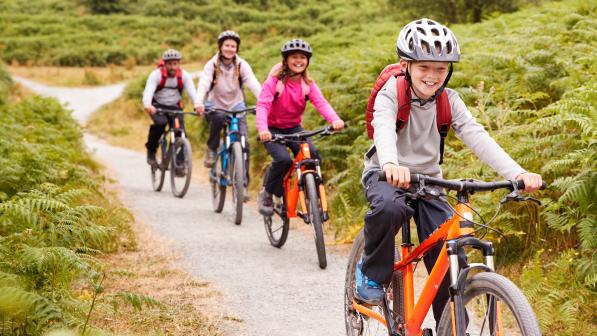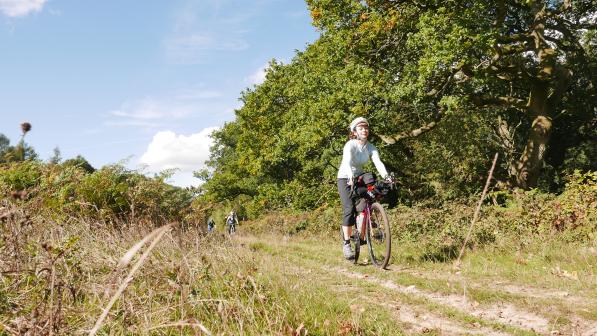Public access makes it into Agriculture Bill thanks to Cycling UK and allies' lobbying

What's happening at the moment?
Environment Secretary Michael Gove has earned plaudits from environment groups and farmers alike for promising that, in this post-CAP world, there will be continued support for farmers but that the Government will require “public goods for public subsidies”. Those “public goods” could include enhancements to the natural environment, including increased public access.
The fact that “public access” is included in clause 1 of the Bill is a huge win for our own lobbying and that of public access stakeholders like the Ramblers, British Horse Society and Open Spaces Society. It’s exactly what we called for in our Get on my land campaign.
We and our partners, however, are concerned that the Bill, as currently drafted, does not go far enough:
i) It creates powers for funding to go to public access, but no real duty to make it happen - it would be quite easy for a future government to park it on the shelf.
ii) It needs a clear regulatory framework that would set out priorities for funding and a series of principles to ensure that best value is achieved.
iii) Perhaps most importantly, the Bill, or the regulations to support its delivery, ought to ensure farmers and other landowners fulfill existing legal duties on access, and also reward them for going over and above this.
Before the Bill was published, Cycling UK provided written evidence to a House of Lords committee on what should be included in the Bill.
Now the Commons Select Committee on Environment, Food and Rural Affairs (The EFRA Committee) is carrying out an inquiry into the Bill itself, alongside the Agriculture Bill Committee which has been formally set up to debate it line by line.
The role of the EFRA Committee is both to offer recommendations to the Government and to come forward with amendments to the Bill at later stages of debate, including in the House of Lords. As a general rule, this type of scrutiny of public bills is where the House of Lords often excels itself, not least because the Lords are more independent of party whips than MPs.
What are we asking for?
Broadly, our top line argument is that just maintaining the current levels of access isn’t enough. We need more access, particularly regards missing links in the existing bridleway network and disused rail lines etc.
We want to see new routes that help riders avoid busy road sections and upgrades of existing links that would connect them directly to the countryside - particularly where it's possible to connect rural rights of way to urban cycle networks so that you can literally ride from the door to the trails.
Essentially, however, we need to look at how money can be routed into funding improvements by paying farmers and other landowners to expand access.
That doesn’t mean we’ve abandoned long-term aims for much greater expansions in cycle access, but we need to be realistic about what can be achieved in the shorter term and within the existing mechanisms. As we saw from our recent Trail for Wales campaign, at the moment there simply isn’t the political will for widespread rights of way change that's going to deliver that anytime soon.
Research on the outcomes of past agri-environment schemes to promote countryside access suggests that they were not always terribly effective.
Improvements like permissive paths under these schemes were sometimes not well-used or served little community benefit, as they were often poorly advertised and did not fit in strategically with the overall rights of way network.
More broadly for cyclists, there was no real presumption in favour of multi-user access routes like bridleways rather than access on foot only. Consequently, less than half the routes that resulted were open for cyclists.
Later, though, the trial project Paths for Communities, did presume in favour of bridleway access. It recognised the benefits to a wider section of the community, particularly disabled users, given that the trails are (generally) wider, better surfaced, without stiles etc. For a couple of case studies, see the Yellow Brick Road and Chevet Branch Line Project.
This experiment didn’t work entirely, however. For example, the money wouldn’t pay for the creation of new rights of way where legal work had to be done to force it through against opposition; and there was no clear connection with statutory Rights of Way Improvement Plans.
Some of these lessons need to be learned in the future system … and unfortunately there's no guarantee at the moment that that will happen.
For more, read our full response to the EFRA Committee.
What can we do to change this?
Well, it remains to be seen!
We’re a relatively small charity, arguing for consideration of better access for a minority user group in a minor subsection of a very complex Bill, dominated by big issues like climate change, animal and plant health and food security.
But, by working with other groups like the British Horse Society who share our interests, particularly with regard to improvements in the bridleway network, we hope that we will at least be heard.
But the more our members can do to support this by making friends with local Ramblers' groups, equestrian groups and others, the better.
It’s sometimes as easy as just taking the time to say 'Hi!' to them as you pass.



